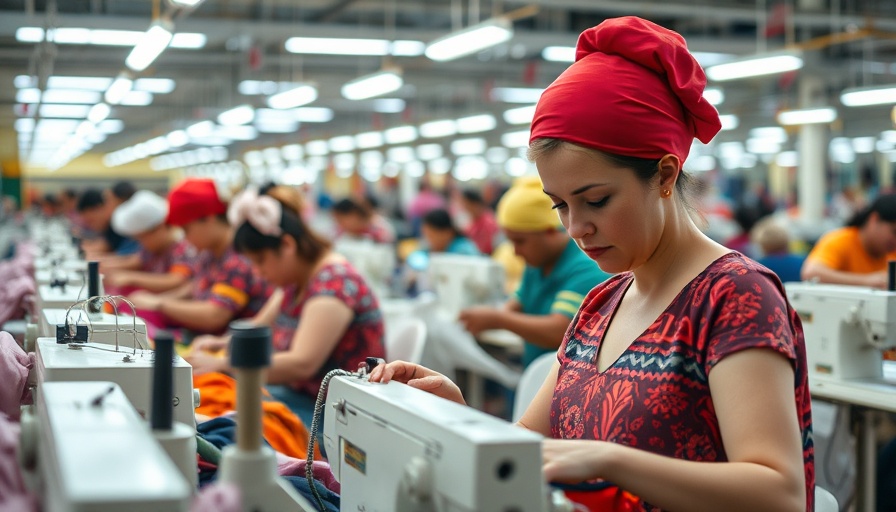
Fashion Workers Face Climate Crisis: Immediate Strategies Needed
The apparel industry is at a critical crossroads, with climate change threatening the livelihoods of millions of workers in the Global South. Reports indicate that iconic garment-producing nations such as Bangladesh, Cambodia, and Vietnam could experience a staggering decline in fashion earnings by up to 22% by 2030 if immediate actions aren’t taken to mitigate these climate risks. Workers in cities like Dhaka and Hanoi are already experiencing the harsh consequences of increased flooding and prolonged heat waves, which pose significant challenges to their health and economic stability.
The Disconnect: Climate Risks and Brand Reactions
Despite the growing urgency, attention to these climate issues has been slow among fashion brands. Jason Judd, a researcher at Cornell University’s Global Labor Institute, observes that brands have not adequately prioritized climate adaptation within their business models. However, a shift is occurring as it becomes increasingly undeniable that neglecting the impacts of heat and flooding cannot be justified in favor of solely addressing decarbonization. Brands are starting to create standards to respond to these risks, but many suppliers remain hesitant due to concerns about financial viability following new adaptation mandates.
The Power of Cash: Enabling Adaptive Choices
One of the most significant forms of adaptation for fashion workers is straightforward: cash. Financial resources allow workers to make critical decisions to shield themselves from extreme heat and flooding. For example, workers in Bangladesh report that the rising cost of everyday needs, such as electricity for fans during intense heat waves, forces them to sell personal belongings. By ensuring that workers receive a fair wage, they can better cope with the constraints imposed by climate change.
Raising Wages: A Path Forward in Bangladesh and Beyond
Currently, garment wages in Bangladesh are adjusted only every five years, creating a detrimental waiting period for workers amid escalating prices. In contrast, Cambodia has adopted a model that reviews wages annually, which has shown positive outcomes for both wages and job growth. Increasing wages does not inherently harm competitiveness, as evidenced by the experiences in Cambodia, where wage adjustments have led to industry growth. To innovate and adapt, brands need to engage in dialogue with governments to create responsive wage policies that reflect the true cost of living.
Implementing Standards: A Necessity for Worker Safety
Alongside wage adjustments, implementing workplace standards regarding heat safety and other climate impacts is crucial. For instance, the European Union’s Corporate Sustainability Due Diligence Directive emphasizes that brands must ensure safe working conditions and be held accountable for any deficiencies. With the rise of regulations, companies have a unique opportunity to not only protect workers but also to improve their own supply chain resilience.
Responsible Actions: Fashion's Role in Climate Advocacy
As manufacturers grapple with the prospects of climate-induced disruptions, the time is ripe for the fashion industry to advocate for wider systemic changes. This includes lobbying for infrastructure improvements, such as flood defenses in garment-producing regions threatened by rising sea levels. By leveraging their market influence, fashion brands can push for meaningful policy shifts aimed at climate resilience, making their supply chains more sustainable and ethically sound.
Call to Action: Embrace Responsible Fashion
Every stakeholder in the fashion industry, from brands to consumers, has a role to play in combating the effects of climate change. Prioritizing sustainable practices, investing in worker welfare, and advocating for policy changes are vital steps towards creating a resilient and fair industry. By choosing eco-friendly products and supporting ethical sourcing initiatives, we can collectively mitigate climate risks while fostering a better future for all involved.
 Add Row
Add Row  Add
Add 



Write A Comment